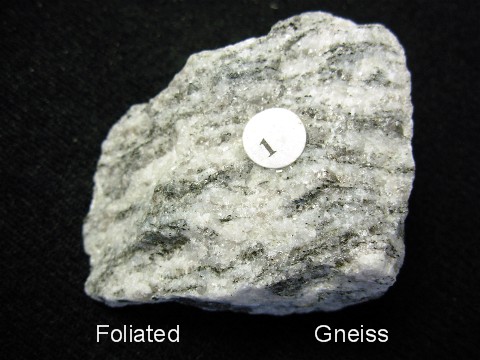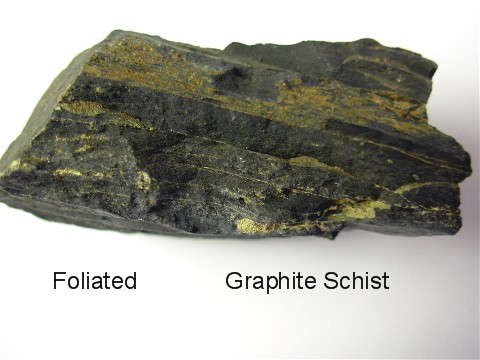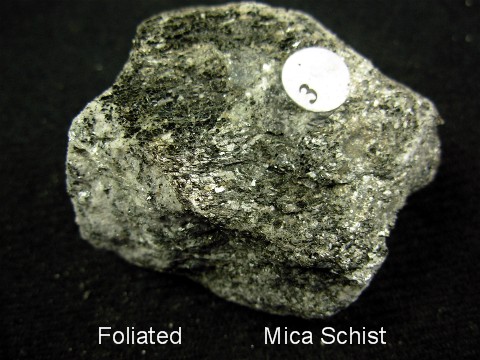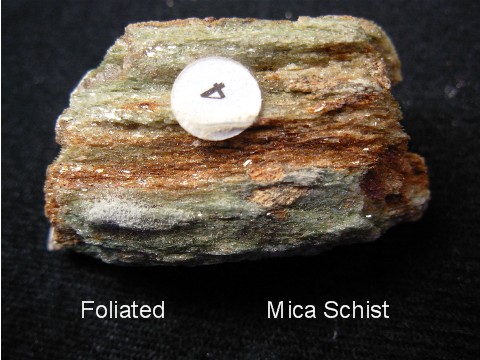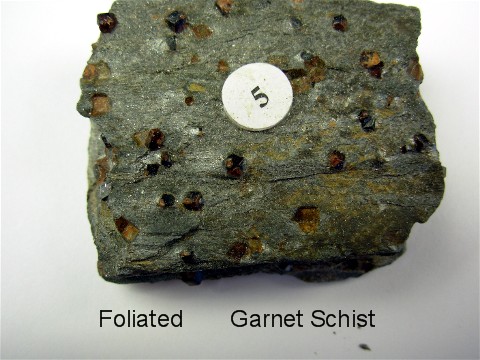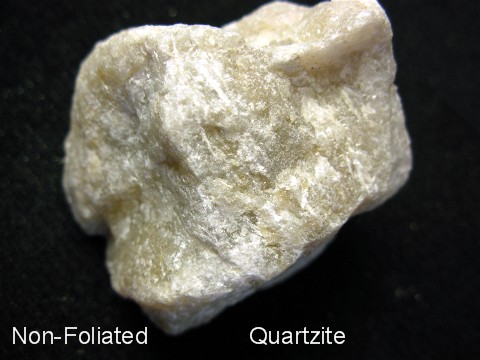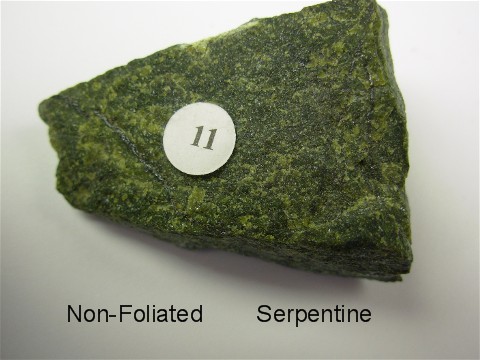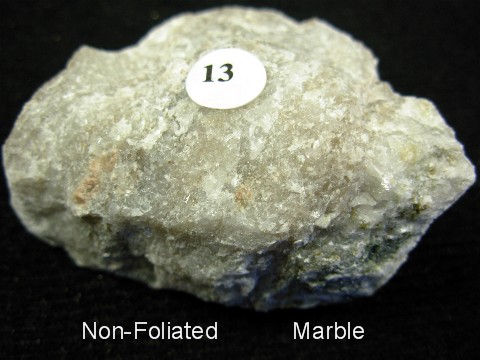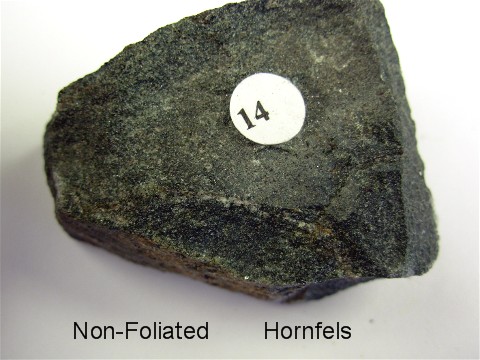SpiritRock Shop "Junior Rockhound Pages"


Metamorphic Rocks
Metamorphic rocks started out as some other type of rock, but have been substantially changed from their original igneous, sedimentary, or earlier metamorphic form. Metamorphic rocks form when rocks are subjected to high heat, high pressure, hot, mineral-rich fluids or, more commonly, some combination of these factors. Conditions like these are found deep within the Earth or where tectonic plates meet. In metamorphic rocks some or all of the minerals in the original rock are replaced, atom by atom, to form new minerals.
Metamorphic rocks are often squished, flattened out, and folded. Despite these uncomfortable conditions, metamorphic rocks do not get hot enough to melt, or they would become igneous rocks!
Foliated metamorphic rock (Foliated means having thin leaf-like layers)
Foliation forms when pressure squeezes the flat or elongate minerals within a rock so they become aligned. These rocks develop a platy or sheet-like structure that reflects the direction that pressure was applied in. Slate, schist, and gneiss (pronounced 'niece') are all foliated metamorphic rocks.
Non-foliated metamorphic rock
Non-foliated metamorphic rocks do not have a platy or sheet-like structure. There are several ways that non-foliated rocks can be produced. Some rocks, such as limestone are made of minerals that are not flat or elongated. No matter how much pressure you apply, the grains will not align! Another type of metamorphism, contact metamorphism, occurs when hot igneous rock intrudes into some pre-existing rock. The pre-existing rock is essentially baked by the heat, changing the mineral structure of the rock without addition of pressure.
Here are some things to look for in metamorphic rocks.
Texture is the main thing to look for. Some of the forms you find may be;
Here are some photographs of some common metamorphic rocks. Look for these same forms, patterns and structure in the rocks you find during your rock hunting trips. See…you have made another step on the road to becoming a genuine rockhound. When you find your rocks, you can number them as we do and make a list to remember their names.
Common Metamorphic Rocks

Good Luck Finding your Favorite Rocks!

